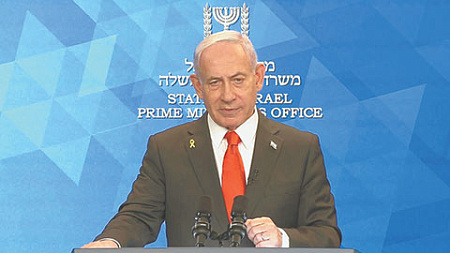
In a stark warning that reverberated across international capitals, Israeli Prime Minister Benjamin Netanyahu asserted recently that Iran is actively pursuing an intercontinental ballistic missile (ICBM) program capable of striking the eastern seaboard of the United States. Speaking in an interview published on the night of October 7, Netanyahu specifically named major American cities like New York, Boston, Washington, and Miami as potential targets, claiming Tehran aims to develop a capability that could hold these urban centers under the threat of nuclear blackmail.
The Israeli premier elaborated on the perceived threat, stating that Iran’s current missile technology, with an existing range of 8,000 kilometers, would only require an additional 3,000 kilometers to reach the East Coast of the United States. He characterized this as a “great danger” and vowed that Israel would take all necessary measures to prevent such a scenario from unfolding, framing his comments as a direct appeal to Washington for renewed military intervention against the Islamic Republic.
Netanyahu’s statements underscored the enduring strategic partnership between the United States and Israel, with the Prime Minister highlighting Israel’s intelligence contributions to global security, including thwarting terrorist attacks and plane hijackings by groups like ISIS. He further emphasized joint US-Israeli development of cutting-edge offensive weaponry, positioning Israel as a crucial innovator providing advanced military technology to America.
His remarks also came against the backdrop of the second anniversary of the October 7, 2023, Hamas incursions into southern Israel. Netanyahu reiterated Israel’s contention that Iran orchestrates and sponsors a regional “axis” of proxies, which he claimed Israel has largely dismantled, emerging from the crisis as the “strongest power in the Middle East” despite acknowledging ongoing challenges.
The Israeli Prime Minister’s pronouncements are widely seen as an attempt to galvanize the US administration into action, potentially advocating for a new military campaign against Tehran, akin to past operations. This call to action, however, faces a complex geopolitical landscape. While Iran officially states it has significantly bolstered its defensive capabilities, independent satellite imagery has reportedly indicated the Islamic Republic’s development of undeclared underground research facilities, deepening its nuclear infrastructure, raising further international concerns.
Ironically, for now, the administration of US President Donald Trump appears to be preoccupied with other regional issues, demonstrating a less confrontational stance towards Tehran. President Trump even recently acknowledged Iran’s unexpectedly positive role in ongoing negotiations in Egypt aimed at resolving the conflict in the Gaza Strip. The Iranian Foreign Ministry, in a cautiously worded statement on October 6, expressed its support for initiatives leading to a ceasefire and upholding the Palestinian people’s right to self-determination, signaling a desire to de-escalate regional tensions.
Such a posture from Tehran may be influenced by its own domestic challenges. The World Bank’s October 7 forecast for the Middle East projects a significant economic contraction for Iran in 2025 and 2026. This downturn is attributed to the reinstatement of UN Security Council sanctions, a decline in oil exports, and the lingering adverse effects of a recent “12-day war” – likely referring to a period of heightened regional conflict or Israeli-Iranian skirmishes – on national production and the trade and investment sectors. Facing these economic headwinds, another large-scale conflict would be acutely disadvantageous for Iran.
Nevertheless, this economic vulnerability could be precisely what Prime Minister Netanyahu perceives as an opportune moment for Israel to press for a renewed effort to weaken Iran’s capabilities and influence, adding another layer of complexity to the already volatile dynamics of the Middle East.
